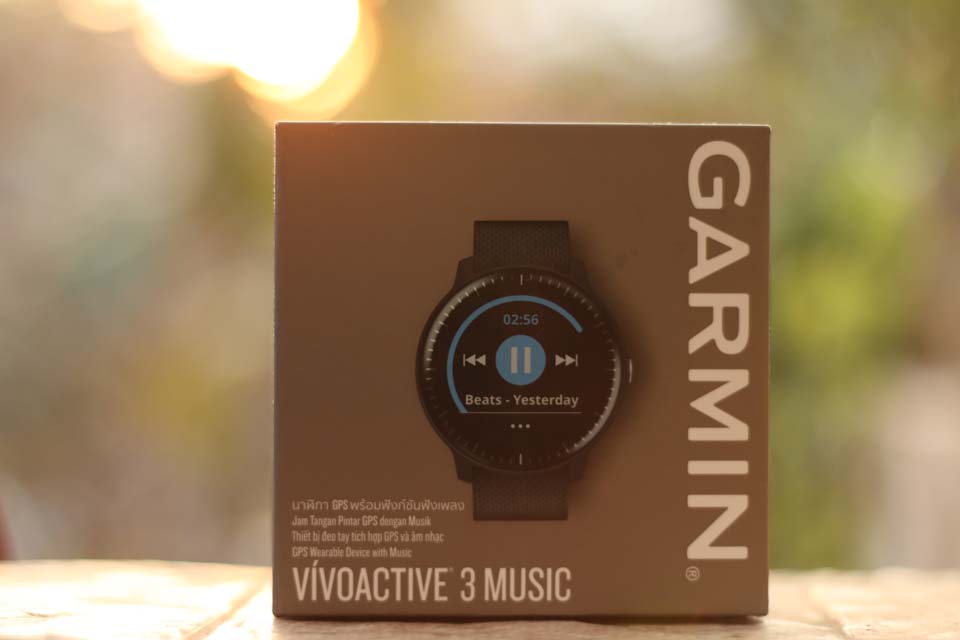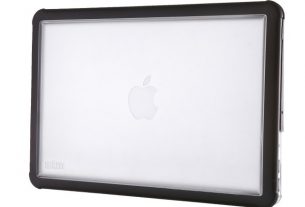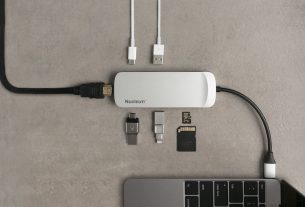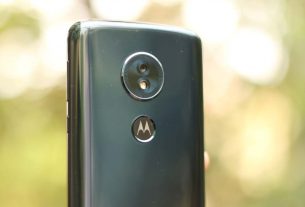Garmin has been very active with their range of fitness watches and the fact they come with a plethora of smart features only goes on to show that they, as a brand, are extremely consumer centric. When Garmin launched the Vivoactive 3 last year, it became an instant success. However, some users were of the opinion that carrying a smartphone while out for a jog or working out in the gym can be quite the hassle. Garmin heard them and that is how the Garmin VivoActive 3 Music came into being. Read our full review to know if this fitness watch is worth a sweat!
Who is it for? – Garmin VivoActive 3 Music Review
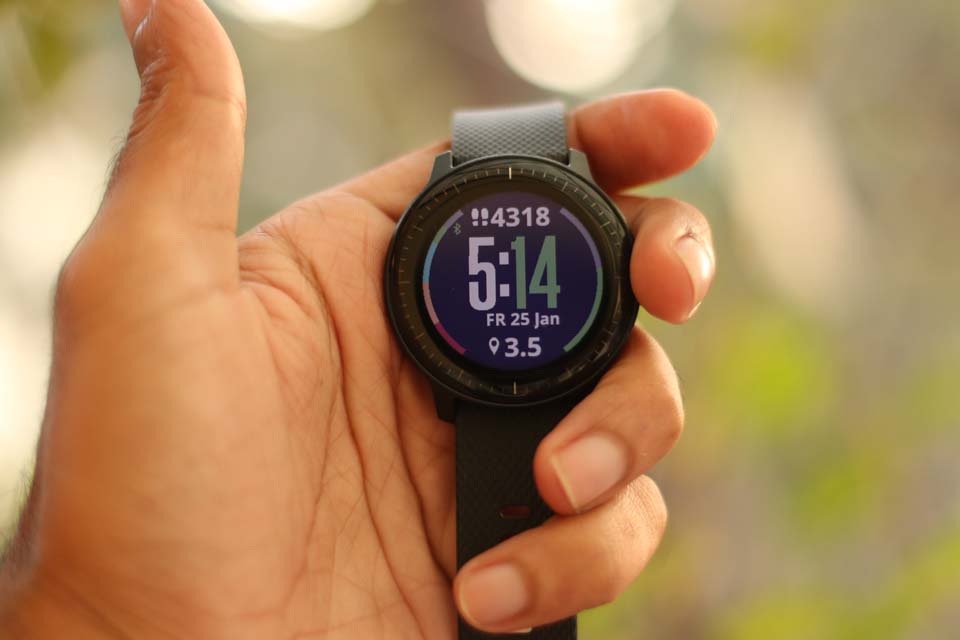
I recommend this watch to any runner who wants to get accurate, detailed information about their running while spending a very reasonable amount of money for all the functionality they get. With its smart features like NFC payment, notifications and picking/declining calls, it is the go-to watch in its segment for the casual fitness enthusiast as well.
Design and Hardware – Garmin VivoActive 3 Music Review
The VivoActive 3 Music continues the latest design trend from Garmin with a round watch face and a 20mm wide silicon band with quick-release system. Unlike previous Garmin models, changing straps is quite hassle free this time around.
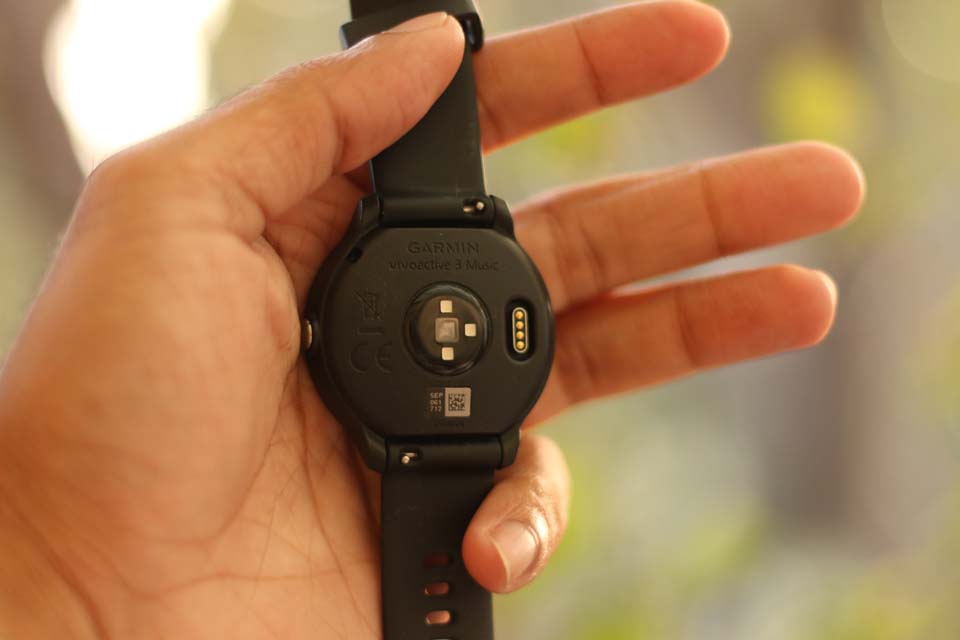
The screen is touch-screen and only one physical button is present at 3 o’clock, where the crown would be in a normal watch. This button is used to start/pause/stop sport activities. While this is a boon for a casual user, touch screens are frowned upon by serious joggers. But anyone familiar with Garmin’s interface should have no issue, I did not.
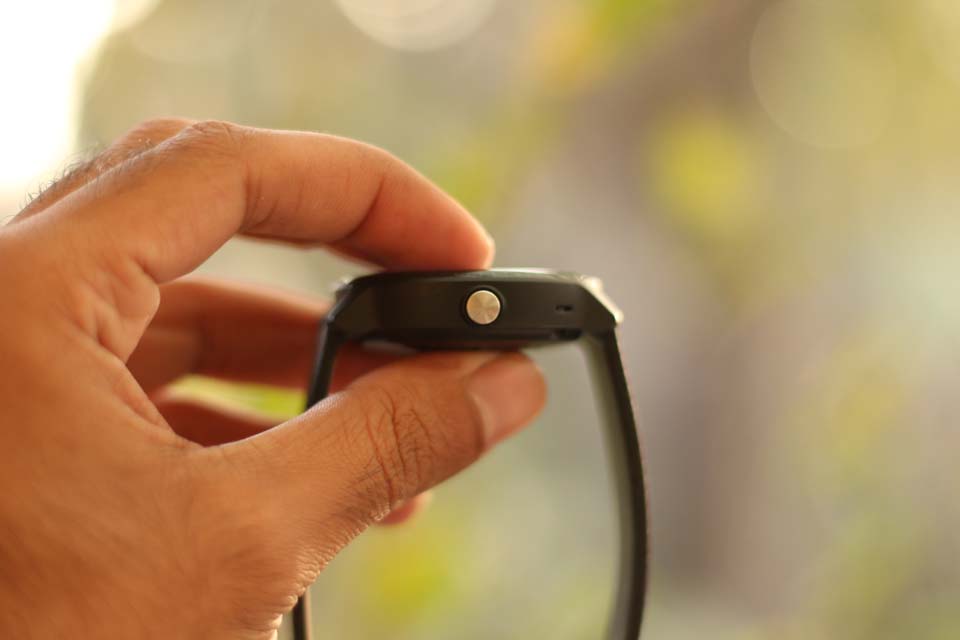
The glass is chemically strengthened glass and after almost 1 months of use it does not have a single scratch on it. We were mighty impressed with the glass as compared to the competition which mostly houses screens which get scratched easily.
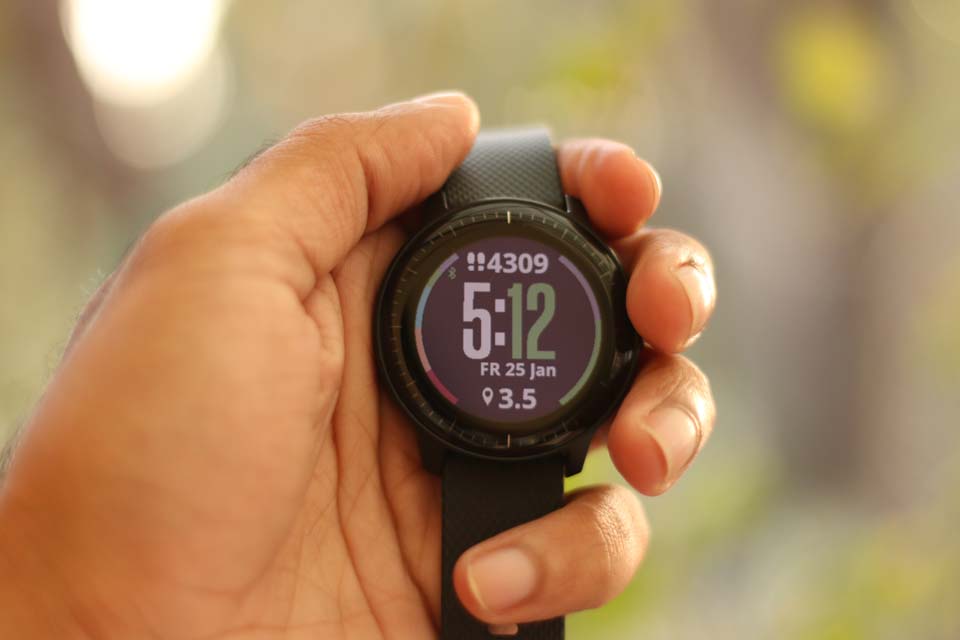
The screen itself has a resolution of 240×240 pixels which not as “dense” as smartwatches such as the Apple Watch or Samsung Gear, but is the current standard for activity trackers and gps running watches. You can make out pixels with your eyes. But do keep in mind that unlike the previously mentioned two watches, this one has a battery life which would put them to shame.
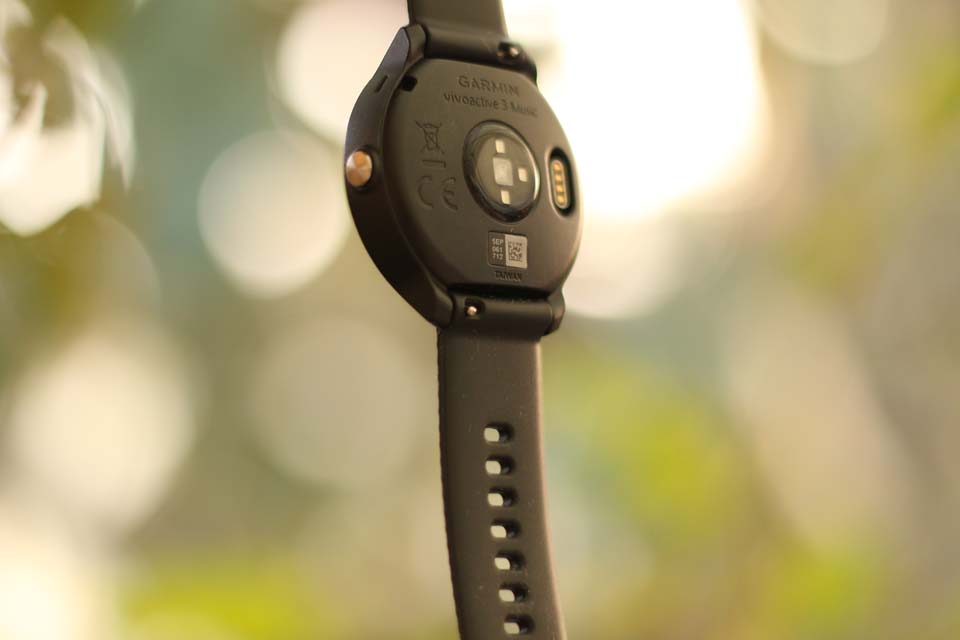
The watch is quite large at 43.1mm diameter, but it doesn’t feel or look too big at all once on the wrist – thanks also to the low weight of 40 grams.
On the back you’ll find the socket to connect the charger cable and the Garmin Elevate wrist heart-rate sensor.
The list of sensors include:
- GPS and GLONASS
- Garmin Elevate wrist heart rate monitor
- Barometric altimeter
- Compass
- Gyroscope
- Accelerometer
- Thermometer
It’s quite an extensive list and – honestly – quite amazing for the price of the watch. I would go as far as saying that you get almost all of the sensors that are present in the Garmin ForeRunner 645 Music, which costs a cool Rs 12,000 more.
Navigating the Interface – Garmin VivoActive 3 Music Review
Almost everything you will do with the VivoActive 3 Music will be with the touchscreen. The way this works is this.
You have a main “screen” which is the watch face. This is highly customisable, but in its basic incarnation is the screen where you see the current time and date.
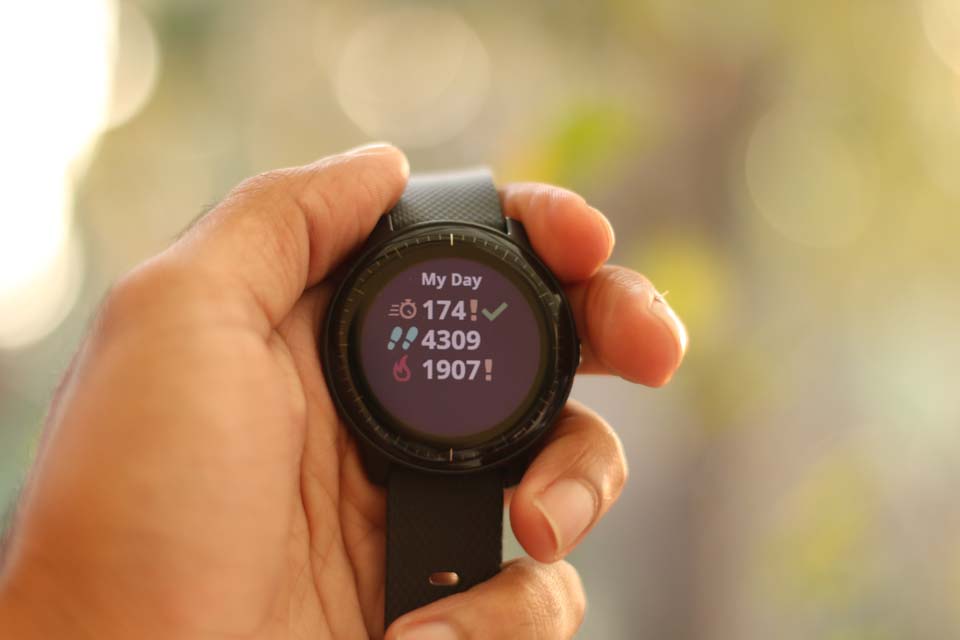
From this screen you can navigate through a series of different screens – called “widgets” – by swiping up and down.
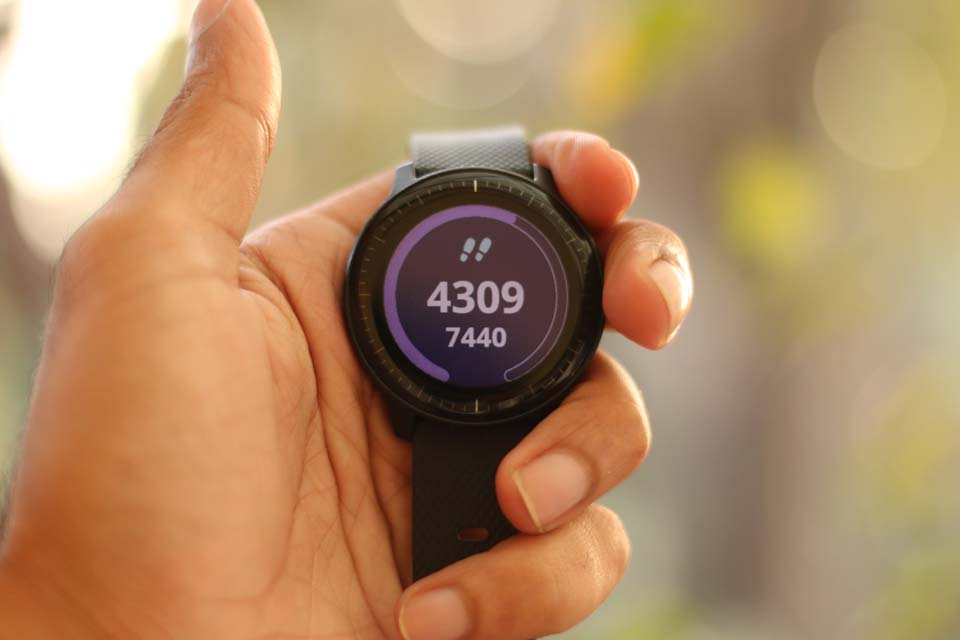 Widgets can be added/moved/removed and the standard ones are: music controls, calendar, phone notifications, rest index, weather, floors climbed, chart of heart rate in the previous 4 hours, last sport activity, weekly active minutes, daily summary, steps for the day… you get the idea.
Widgets can be added/moved/removed and the standard ones are: music controls, calendar, phone notifications, rest index, weather, floors climbed, chart of heart rate in the previous 4 hours, last sport activity, weekly active minutes, daily summary, steps for the day… you get the idea.
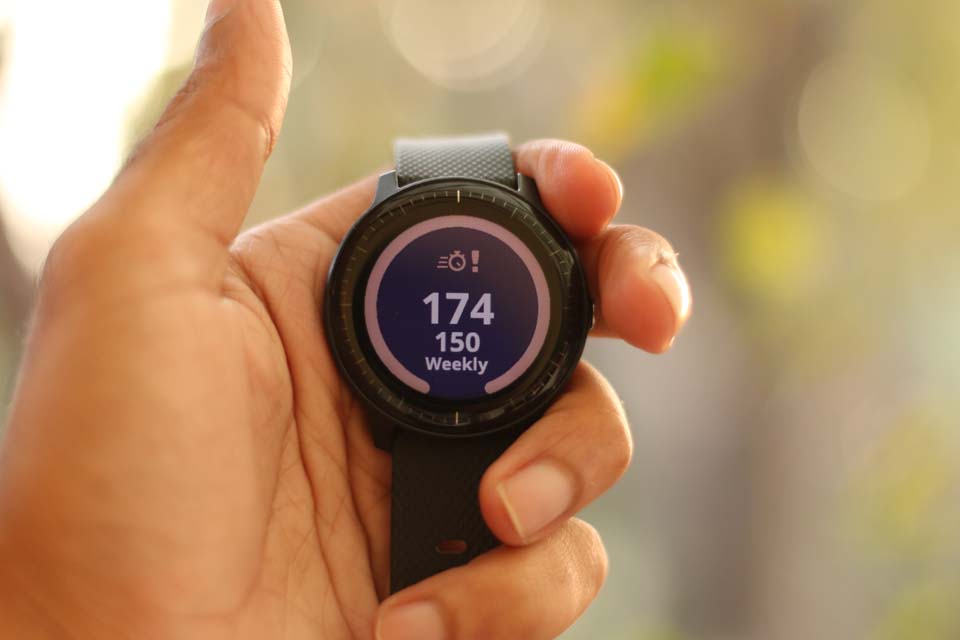
Swiping left to right equals a “back” button, while a long press on any given screen (widget) opens the settings for that particular widget and for the watch itself.
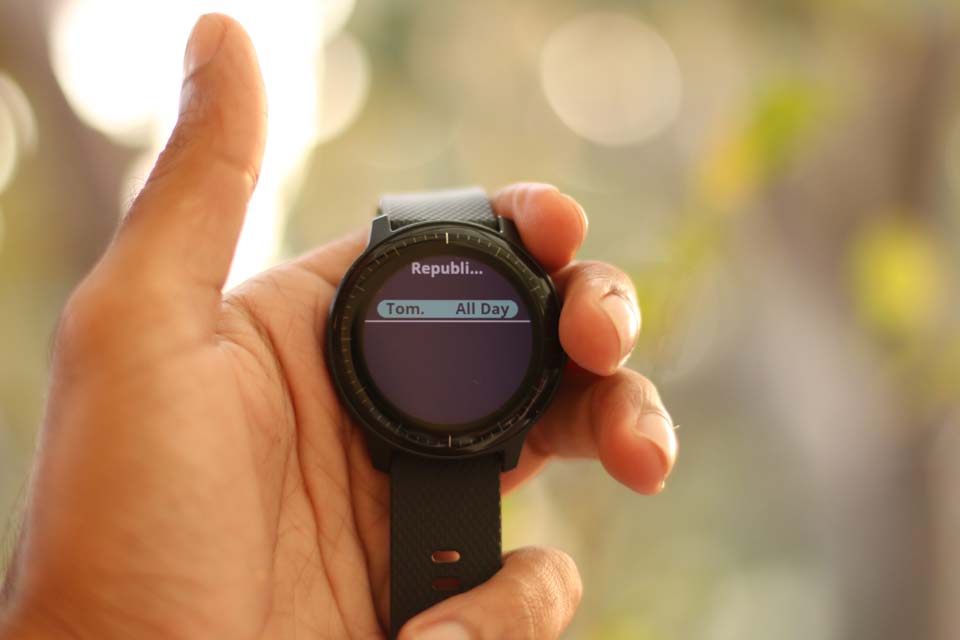
Last, the physical button at 3 o’clock. This button starts or pauses/stops the tracking of an activity. So if you want to start a run you’ll have to press the button, select “Run” (scrolling and clicking with the touchscreen) and once it has locked on the sensors (heart rate and GPS) you can press the button again to start the run. Pressing the button again pauses the activity, but if you tap on the big red square on the screen, you will stop the activity. The watch will then ask you if you want to save the activity or not.
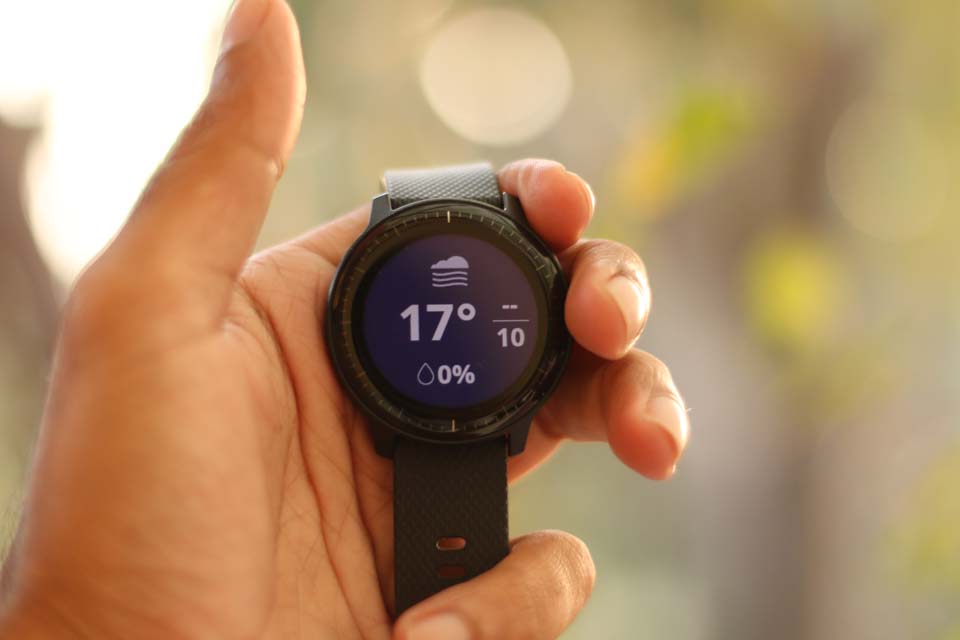
I always run with automatic laps of 1km and never use the manual lap function.
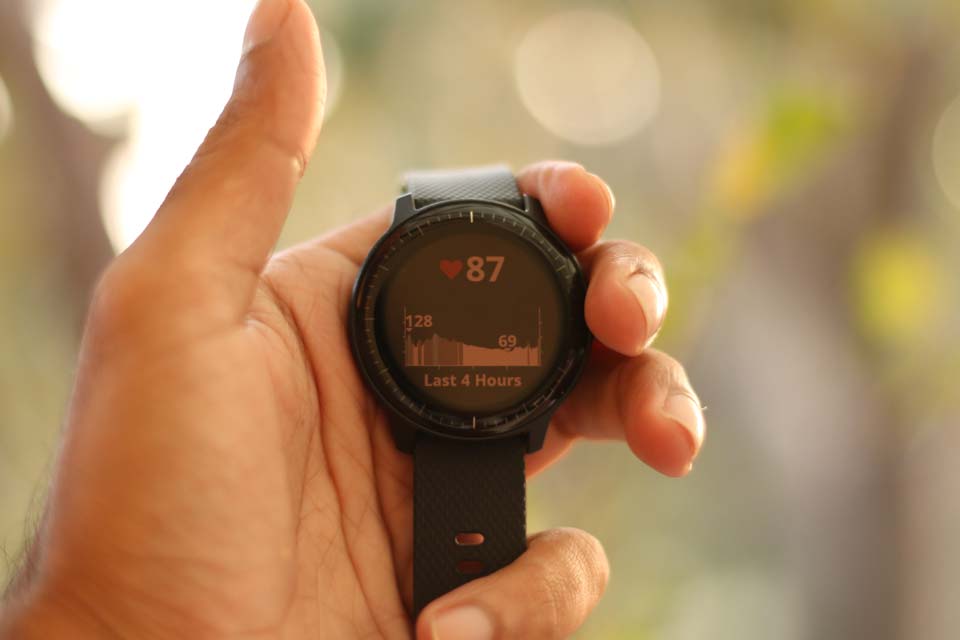
If you do want to use it, you’ll have to double tap on the screen to mark the end of a lap and the beginning of another one.
On the run – Garmin VivoActive 3 Music Review
I really enjoyed running with the Garmin VivoActive 3 Music. The “Run” screen is first of all very readable in all lighting conditions and does not auto turn off.
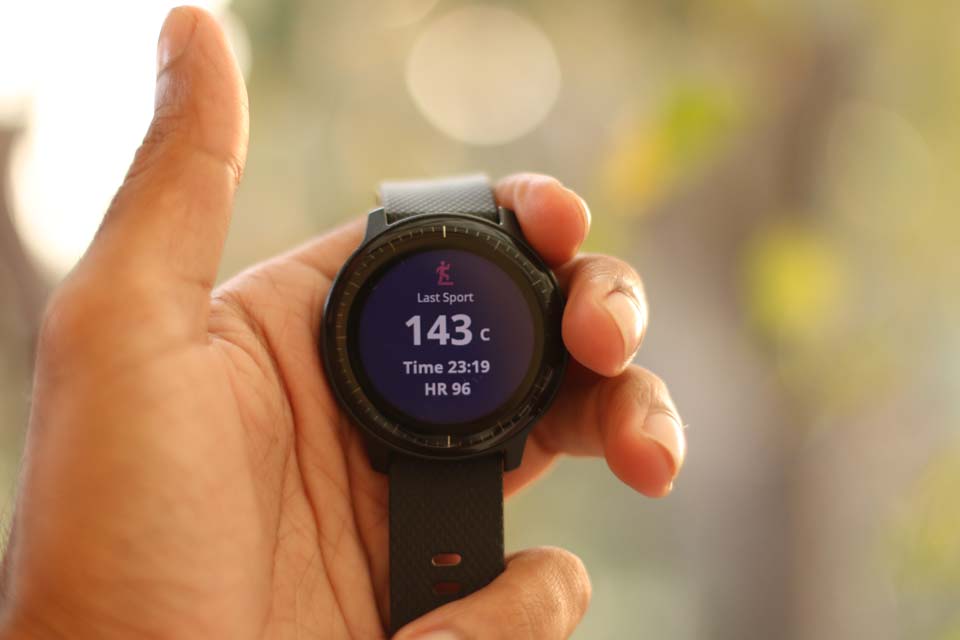
I have been logging a decent amount of distance on my Samsung Gear Sport which automatically dims the screen when you are not looking at it in order to save battery. While a commendable feature, I like being able to just glance at my watch to peak at the data, rather than having to perform the exaggerated movement that will wake up the screen.
This said, the other thing I like about the VivoActive 3 Music screen during the run, is how customisable it is.
You have 3 screens full of data (plus a 4th, non-modifiable one, with heart rate gauge) available for you to populate with whatever data you find useful. You will then decide if you want to have the screen fixed by default and swipe up/down to look at the other ones, or you can opt for the screen periodically rotating.
Personally I like to scroll through them myself, because I don’t want to look at a screen one time and the middle field is “current heart rate” and the next time it being “cadence”.
This said, the choice of data fields available and the possibility to customise up to 3 screen with 4 data fields in each gives you potentially all the information you want to track ready at your wrist.
Last, if you opted for auto laps, once your distance is completed the watch will shortly vibrate and the screen will briefly show stats for this last lap.
Software and Connectivity – Garmin VivoActive 3 Music Review
Garmin has a top notch software eco-system called “Garmin Connect”.
Once you have installed the app on the phone and paired the device, your activities will automatically sync and you’ll be able to explore them all in the software – either on your phone or on the web version.
A function called “Physio TrueUp” will sync your activity data across devices. This might not be so useful if you have only one device (most of people). But if you are like me and are testing more than one watch, or if you train with a Garmin device for running and another one for cycling, this function is great. All the data will still be in your Connect profile anyway, but it’s good to be able to see all your data from each device, whatever device that data originated from.
Garmin Connect is a good suite of dashboards, widgets and screens that give you both an insight on your activity level (steps, floors, sleep, calories in vs calories out thanks to MyFitnessPal integration…) and the list of your sport activities with good level of detail.
Talking about runs specifically, what I like is the ability to check speed, cadence, heart rate all at the same time while locating yourself on the map. What I mean is if you click on a certain spot on the map of your run, you’ll see right below how you were doing in terms of those metrics.
You will be able to check your lap performance and the time spent in different heart rate zones too.
Other Activities – Garmin VivoActive 3 Music Review
The watch comes preloaded with quite a few extra activities that you can monitor: from strength training to cardio, indoor rowing, swimming, cycling and more. I used the cycling function quite extensively and the cardio/strength too.
Overall I am satisfied by the watch’s tracking of other activities.
Accuracy and Battery Life – Garmin VivoActive 3 Music
Starting with battery life. I have been wearing this watch for a month. I keep lighting of the screen at 75% which is plenty for good visibility outdoors and plenty for the dark.
With this setting I can keep the VivoActive 3 Music on for 7 full days including 1/2 runs and a couple of other activity sessions (heart rate but no gps).
Most of my jogs have been around an hour each. I haven’t run 5 hours with the watch yet, but 5 hours with heart rate, gps and music is not a bad promise and if you need to run it for longer you’ll have to decide your own trade-off with functionality.
GPS Accuracy: the GPS performs like you would expect a Garmin to
Locking on the satellite is usually a matter of seconds. I say usually because in a couple of occasions it took a good couple of minutes to find a signal.
For accuracy of tracking your run I would say, like most Garmin devices, it is top notch.
Music and “The rest” – Garmin VivoActive 3 Music Review
The most interesting function of the VivoActive 3 Music is of course its music playback capability.
It can connect with online streaming services, but I believe the best use comes from storing music directly onto the device’s built in storage. It is then that you can go for a run sans your hefty smartphone.
In order to download music to the watch you have to be physically connected with the charging cable to your PC and install/launch the Garmin Express app, which is the same app that allows you to get watch faces and apps installed too.
It all works fine, but obviously I would have preferred the watch to update playlists and podcasts wirelessly – it has wifi and Bluetooth, and it’s 2018! The watch is not my daily music player – I just make sure to have enough music and podcasts loaded up when I want to listen to something during my runs.
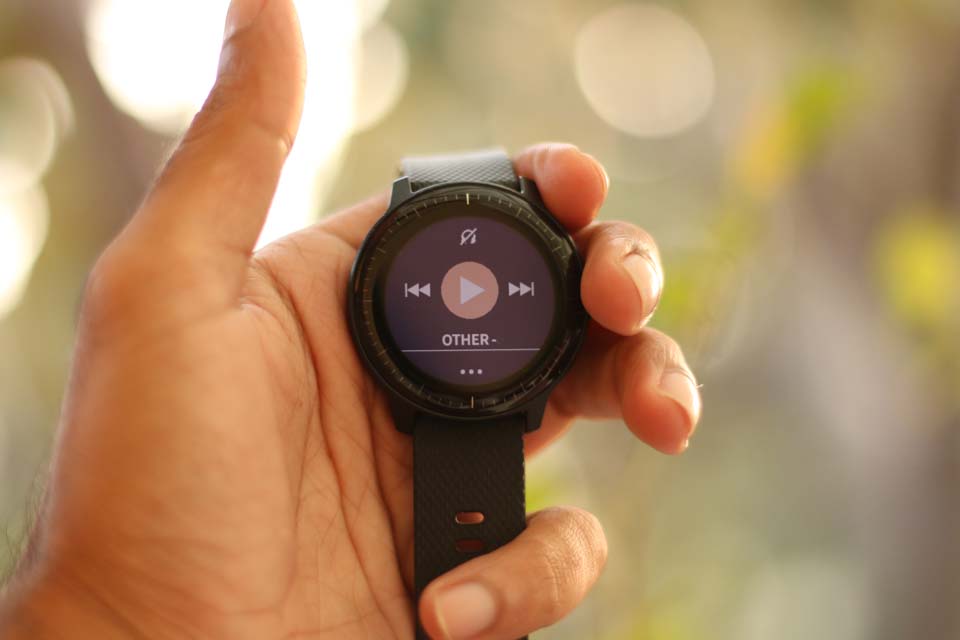
Last, how does it sound over Bluetooth headphones? I have connected it to atleast half a dozen different bluetooth headphones/earphones and it worked flawlessly most times.
Overall, listening to podcasts (prefer this to music while I run) with the VivoActive 3 Music beats running with your phone by a large margin.
Unlike the previous Garmin I reviewed, the sleep tracking is more extensive too. While the previous one gave me an idea of Deep sleep – Light sleep only, the Garmin VivoActive 3 Music also pushes out data w.r.t REM which really helped me decipher the level of energy I woke up with.
The Garmin Vivoactive 3 Music also comes with NFC payment option, but I could not test out that function considering that sort of “future” technology is still not rampant here.
Conclusion – Garmin VivoActive 3 Music Review
With the VivoActive 3 Music you get a watch that serves 3 main functions:
- A very capable GPS running watch
- A capable and complete 24 hour activity tracker
- A basic smartwatch with in-built music capabilities
I am honestly impressed with how much you bring home with the Garmin VivoActive 3 Music with its price tag.
Although it has some smartwatch function, it is no competitor to the Apple Watch or the Samsung Gear family of watches. But, if running is your main usage, and you want to be able to track not only your running, but a slew of other sports plus your 24 hour activity (including sleep) this is your watch.
Verdict – Garmin VivoActive 3 Music Review
The VivoActive 3 (Music) is quite a complete running watch, covering obvious data such as distance, pace and heart-rate but also more detailed metrics such as cadence – all with customizable data screens to suit different info needs for different runners.
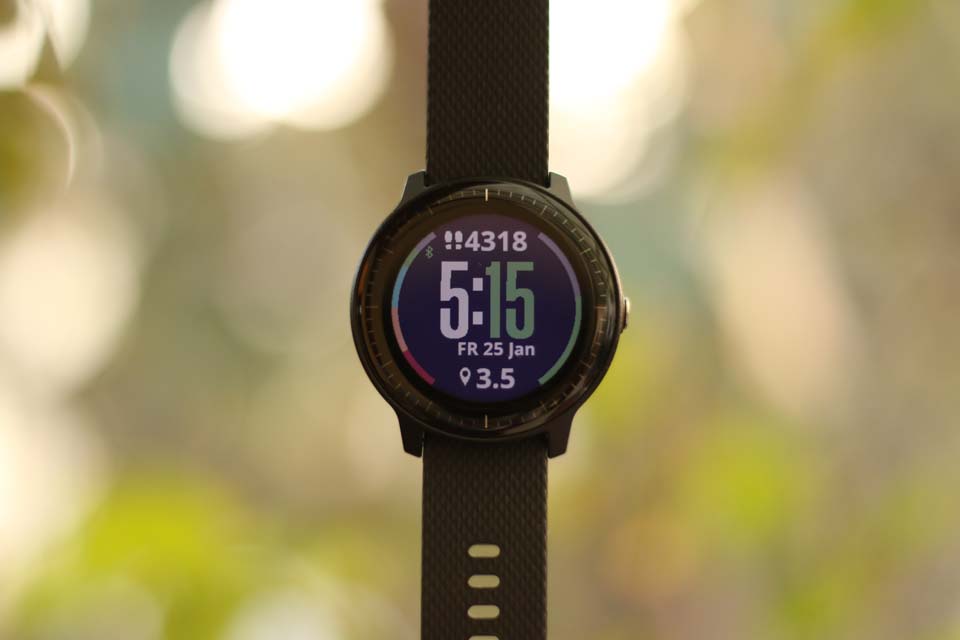
It is waterproof and tracks indoor swimming too, together with a dozen of other pre-loaded activities. At this price, I would totally recommend this to a fitness enthusiast who needs more functionality than a traditional jogger watch, but would like his workouts to be tracked with utmost accuracy nonetheless.
